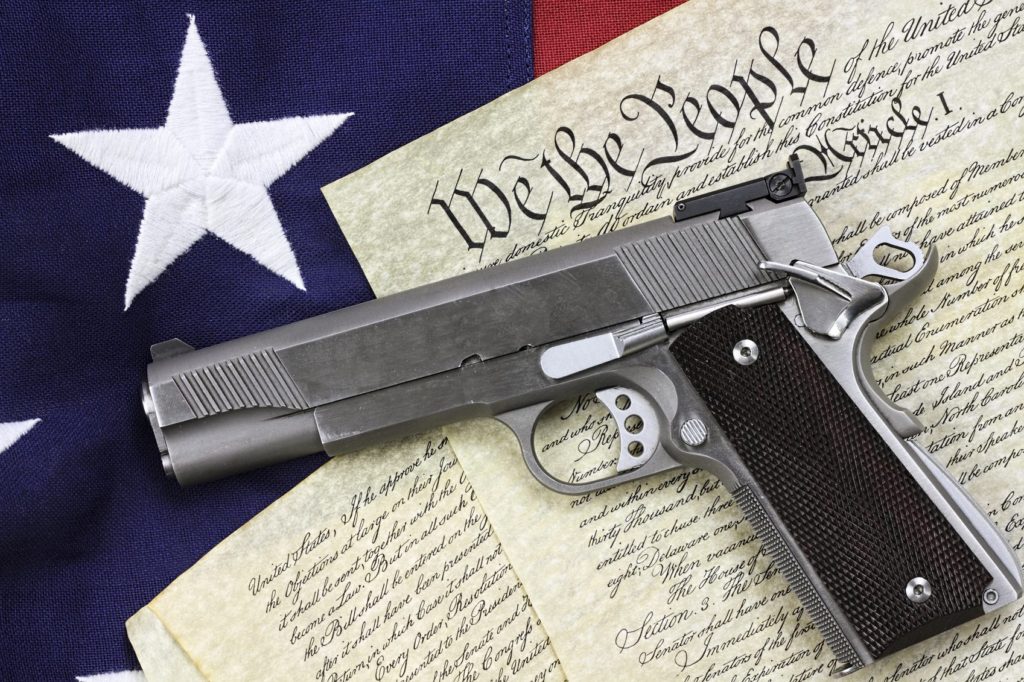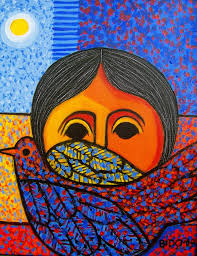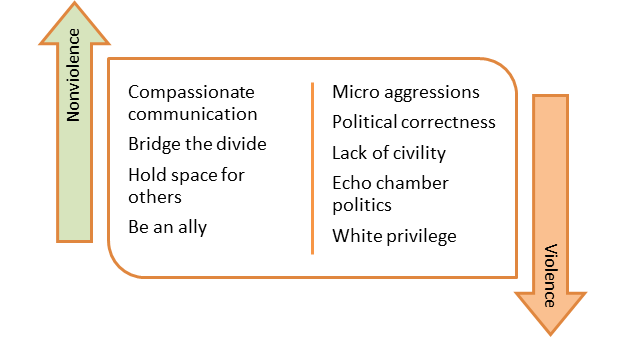Gun Safety

Four years ago I wrote a proposal addressing gun violence in America and began to shop it around. I was able to get a meeting with a senior staffer in the St. Louis office of Senator Claire McCaskill. He was attentive and generous with his time, but in the end, said that, while he believed that my proposal would make us safer if implemented, it was a political non-starter. I am hoping the political will has shifted enough to allow consideration of this perspective on and strategy for addressing gun violence.
I am Rev. Dr. Mark Lee Robinson. I am the Executive Director of the Center for Creative Conflict Resolution in St. Louis, MO. I have 40 years of experience addressing violent conflict in human systems. The collected wisdom of this work is something we now teach under the banner JustConflict. One of the basic principles is that a strategy for addressing conflict will arise as an expression of a definition of the problem. How we define the problem determines what will occur to us to do about it.
When the problem is simple, there will only be one best way to define the problem. When the problem is complex [what social planners call a “wicked” problem] there are many valid ways to define the problem and no best way. But practically speaking, we want to select a definition of the problem that allows us to solve it. We have been defining the problem of “gun violence” in ways that do not allow us to solve it.
Indeed, the dominant voices are highly polarized and end up reinforcing resistance to each other. If I say there are too many guns, anyone who owns one will imagine that “they are going to come and take away my guns.” When Obama became President, guns sales went up. “I better get mine now while I can.”
Resolution works better when we focus on what we all need, rather than the understandable attending to where we disagree We work better when we work together.
So I suggest a shift in our focus on the problem. I am not saying we shouldn’t do things like background checks and waiting periods, but I don’t really see them as being all that effective in the long run.
We don’t agree on whether more guns will make us safer, but we do agree that we want everyone to be safe. Let’s build on that.
There are some folks who think no one should possess a lethal weapon and there are some folks who believe that everyone should. Those are the two extremes. Most folks believe that there are some who should never have a gun, and some who must carry them to keep the rest of us safe. No one is saying that all of the patients in the psych hospital should have a gun and very few say law enforcement should disarm.
Most will agree that there is such a thing as a responsible gun owner. It is possible for someone to possess firearms and to use and store them in a manner that is safe. As long as only responsible gun owners can possess a weapon, we will be safe.
Is it possible to determine who is and who is not such a person? Are there ways to discern who is a “good guy with a gun?”
We probably don’t yet know how to figure that out, but I think we have large agreement that we need to figure that out, and to then be sure that no one who is not so identified has the right to possess a lethal weapon.
I am shifting the focus here from who owns the gun to who possesses the gun. If you are to legally possess a firearm in the public arena, on your person, in your car, at the shooting range, or hunting in the wilds, you must be certified as a “responsible gun owner.” We are shifting the focus from ownership to possession and from gun rights to gun responsibilities. You may be able to go to Walmart and purchase a gun but you can’t carry it out of the store without having demonstrated that you can possess it safely.
Most Americans agree, I believe, that someone who cannot demonstrate that they can possess a gun safely has no right to do so. Instead of it being society’s responsibility to remove the right from someone who is dangerous, it is the person’s responsibility to prove that they are safe.
The question that remains then is, how do we know who is safe with a firearm?
Ultimately, of course, we cannot know. But we want to have social policy that will reliably move us in the direction of reducing the chance that someone who is not safe will have access to a firearm. This is the goal I think we can all agree on.
But there is a catch [isn’t there always]. Who gets to decide who is a responsible gun owner and how do they decide?
This is where my proposal starts to make folks uncomfortable. Some think this has to rest with the government, whether State or Federal. No other entity has to authority to make this stick. And some don’t trust the government and so if it is involved they will oppose it. “I don’t want any government entity knowing anything about my guns.”
What we can then do is to have a law that gives the government the power to enforce a determination that is made by a public organization. The public entity has the task of discerning who is safe and the government enforces that determination.
One last piece. How is the system to be accountable for public safety? How do we apportion criminal and civil liability when a bad guy with a gun uses it?
If someone who possesses a firearm uses it with criminal intent, and they were able to get possession without having first been certified, then this is a criminal matter for which law enforcement is responsible. If however they were certified by a public organization, then that organization is civilly liable. [This is in addition to the criminal and civil liability of the bad actor.]
If I want to buy a shotgun to go hunting and I go into a local store to buy one, the sales person will ask if I am certified to carry a shotgun. If I say no, he is going to tell me that he will gladly sell it to me but he can’t let me carry it out of the store. I have to first prove that I have proper certification. If he allows me to, then he is in violation of the law and he faces penalties.
So I go online and find a company that offers certification. Think insurance company here. They want to sell to me but they are going to make sure that I know what I am doing because otherwise they are going to face lawsuits if I screw up. They send me to a company that does firearm safety training. This is like the companies that train people to drive a motorcycle. In most states you need special training to get a driver’s license to use a motorcycle.
I get the training and take the diploma to the certification/insurance company and they write me a policy and I take it to the gun store and they sell me a shotgun. But, oh, I say, while I am here, I think I’ll get an AR-15. And the store owner says, let me see your certification. Oops, no, you aren’t certified for an automatic rifle.
If I already have a gun collection and I don’t want to get certified I don’t have to… as long as I don’t take them out of the house. If I want to loan my son my shotgun, and he isn’t certified, then I am criminally liable for transferring possession to someone without certification.
The safety trainer is accountable to the certifying agent to be sure that students learn what they need to know. The certification company makes sure that they have covered all the bases. Maybe they require recertification periodically. Maybe they revoke certification in the event of an Adult Order of Protection. Maybe they want to do a more thorough background check. They certainly don’t want to be civilly liable for Parkland or El Paso.
The pitch is that we are balancing gun rights with gun responsibilities. We are affirming that there are responsible gun owners and that they can help create public safety by working to identify each other and to weed out those who cannot be trusted to safely carry a lethal weapon. We do this by allowing public corporations and associations to certify who is safe with which firearms. We are not getting the government involved in the control of who carries what gun, but we are trusting law enforcement to enforce the laws.
Oh, and then there is the Second Amendment. There will be a court case [probably many of them] that says that the requirement that one must be certified to possess a firearm is unconstitutional.
The wording of the Second Amendment is a bit odd. It reads, “A well regulated Militia, being necessary to the security of a free State, the right of the people to keep and bear Arms, shall not be infringed.”
If I may be permitted to paraphrase the wording without, I believe, altering its meaning but in fact making it clearer we might read it as, “The right of the people to keep and bear Arms shall not be infringed because the security of a free State depends upon a well regulated Militia.”
About this reference to a Militia, the Supreme Court held in DC vs. Heller that, ““The “militia” comprised all males [sic] physically capable of acting in concert for the common defense…” and that the reason for this provision is “…so that the ideal of a citizens’ militia would be preserved.”
A militia is thus an organization that identifies and organizes persons so that they may act in concert for the common defense for the security of a free State. It is not a gang or posse or band of vigilantes. Certain paramilitary organizations have used the term “militia” to refer to themselves. As a result, many folks don’t think of a militia as making them safer.
I am hoping we now have the political will to say that the right to keep and bear Arms is one that rests upon the need for the security of the people, and that being a member of an organization that certifies one’s ability to act safely is the modern equivalent of a well regulated Militia.








